Have you ever had a dream so real that you woke up wondering if it actually happened? I remember when I first read Harry Potter, I had the wildest dreams. I was waving a wand, casting spells, and flying on a broomstick around Hogwarts. One night, I even dreamed I was playing Quidditch, zooming past dragons and catching the Golden Snitch. It felt like stepping into a movie, where my imagination turned every page into a magical adventure. Ah, silly me!
Dreams can take us anywhere, whether it's meeting our favorite characters, exploring enchanted worlds, or doing things that seem impossible in real life. And let's be real, who wouldn’t want to dream of being part of their favorite video game? Imagine dreaming of winning a battle in Fortnite, solving puzzles in Minecraft, or racing through futuristic cities in Roblox.
But what exactly are dreams, and how do they work? And here's a bigger question: Just like us, do you think machines can dream too? In this blog, we are exploring it in depth.
What Are Dreams, and How Do They Work?
When you sleep, your brain doesn’t just switch off. Instead, it stays busy, sorting through everything you've experienced during the day. It takes bits of your memories, mixes them with your imagination, and creates stories while you snooze. Some of these stories make sense, like replaying a fun day at the park, while others are completely random. And sometimes, dreams become reality too, like when I dreamt of going to the UK to study for my master's degree, and then I actually did! Later, I even went to France to pursue my PhD. What are the odds!
Dreams are like your brain’s way of playing and experimenting with ideas. It tries out different scenarios, solves problems, and sometimes just entertains itself. But this brings up a big question - If dreams are tied to how the human brain works, can AI, which lacks a human brain and consciousness, "dream" too?
Can Machines Dream?
Yes, a machine can dream, but not like humans do. It doesn’t sleep or have an imagination, However, it can create things that look a lot like dreams. When you see art made by AI programs like DALL-E or Midjourney, it almost feels like the machine is dreaming. These programs take pieces of information, mix them up, and create something new, just like your brain does when you dream.
For example, if you asked an AI to imagine a dragon, it might take features from all the dragons it has seen in pictures, blend them with what it knows about reptiles, and create a brand-new dragon image. The AI doesn’t dream in the same way you do, but it does create by mixing information, which is pretty close.
How Do Machines Create Its Own Dreams?
When a machine creates its version of dreams, it uses a process called generative learning. It starts with an AI learning from a huge amount of data, like looking at thousands of photos, listening to hours of music, or reading tons of text. The AI then uses this information to generate something new.
Some AI systems use neural networks, which are built to mimic how the human brain works. Neural networks help machines recognize patterns, make decisions, and create new things. It's like when your brain pieces together random memories and ideas to form a dream. The AI might combine shapes, colors, and patterns to create a unique image, or blend different musical notes to invent a new song.
One famous example is Google’s DeepDream, which transforms regular images into wild, dream-like pictures by finding patterns and exaggerating them. When the AI looks at a picture of a tree, it might see faces or animals hidden in the branches, turning a simple image into something straight out of a dream.
In the world of music, AI like OpenAI’s MuseNet can generate original songs by blending styles from classical to pop. It’s as if the AI is dreaming up new melodies, inspired by everything it has learned.
And in gaming, AI can create entire video game worlds. Imagine playing a game where every level is brand new, generated by an AI that dreams up new challenges and adventures as you play.
Machines might not dream about flying or playing Quidditch, unless you make it read Harry Potter and then ask it to imagine a Quidditch match. However, their ability to create new and imaginative things is pretty close. While human dreams come from our thoughts and feelings, AI “dreams” come from data and patterns, but both can lead to amazing creations and endless possibilities!
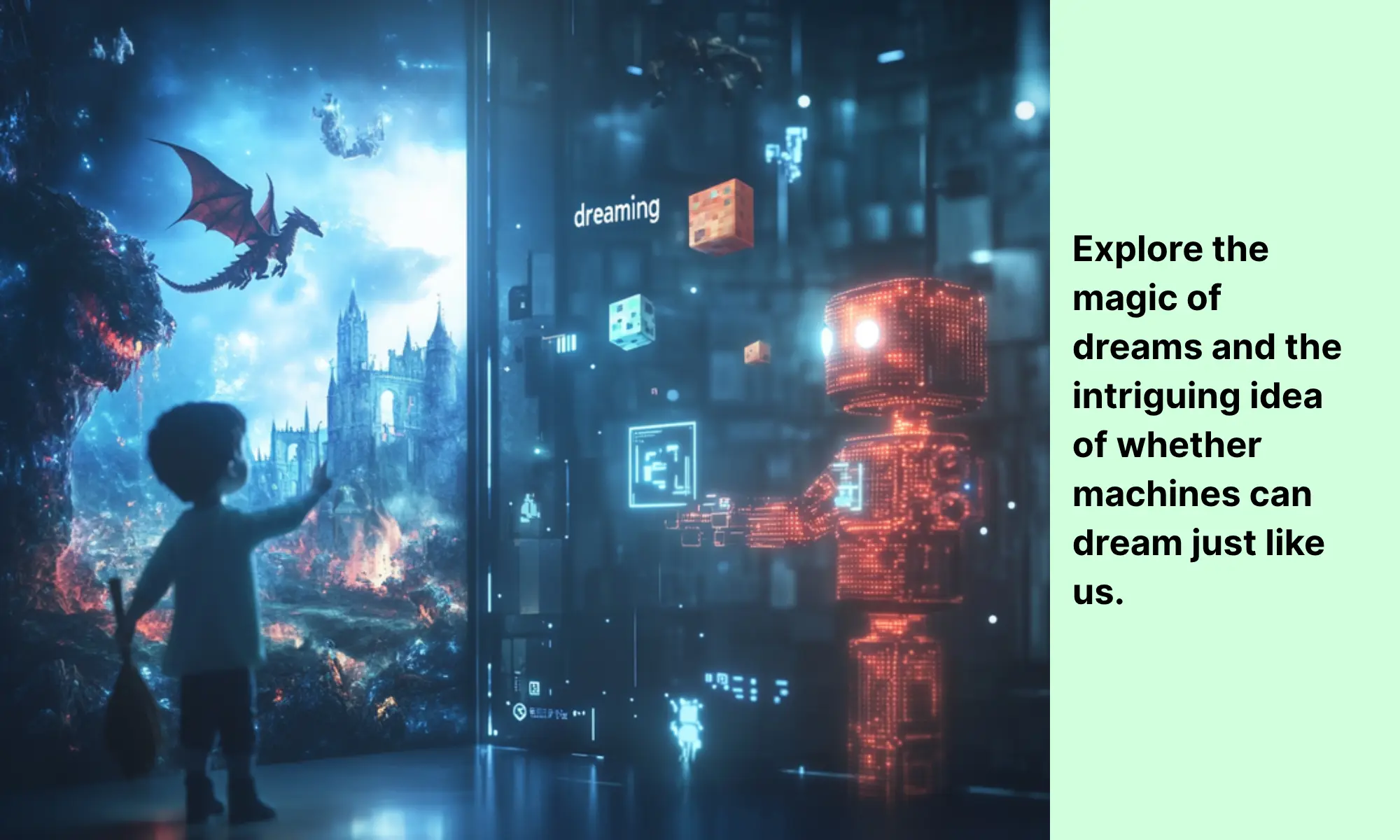
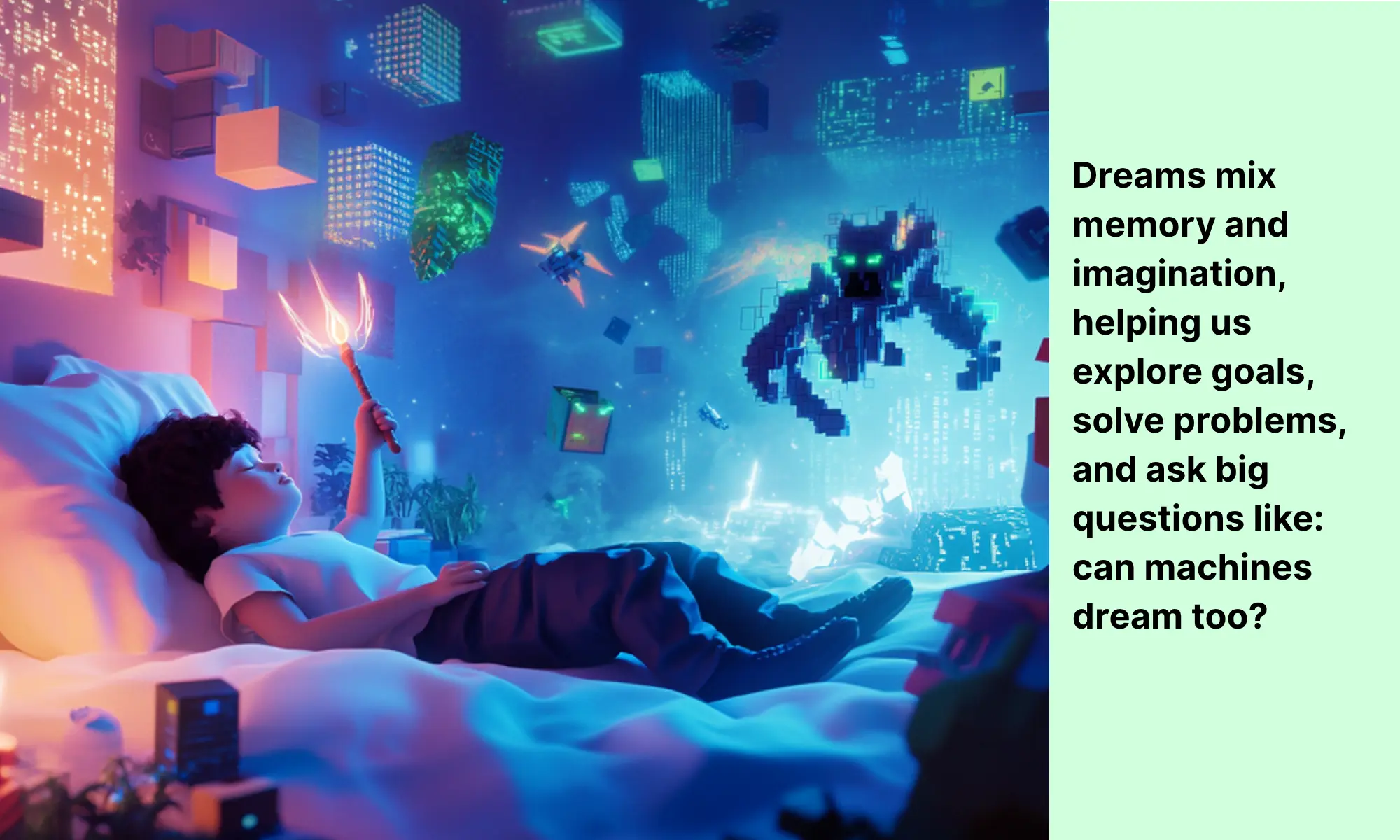
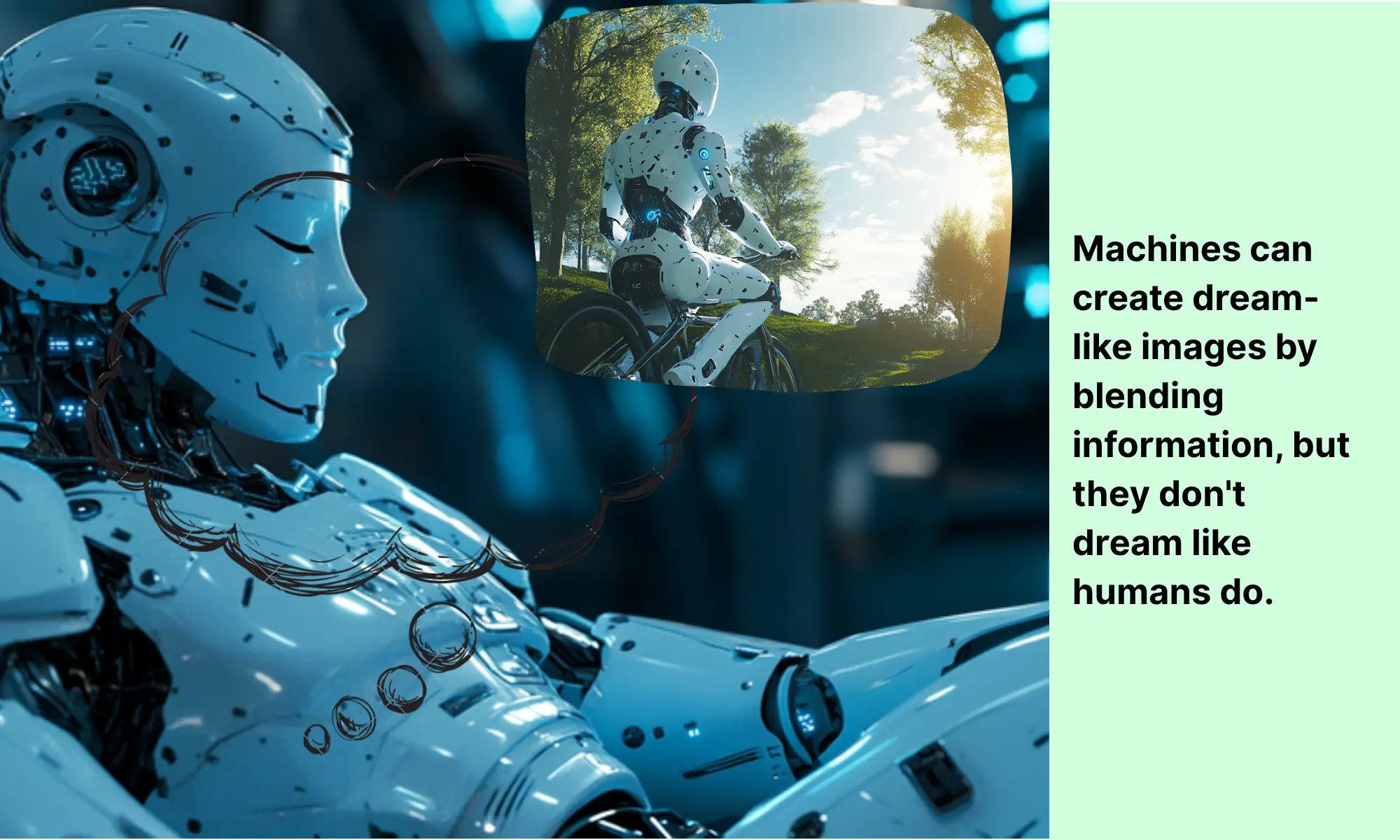
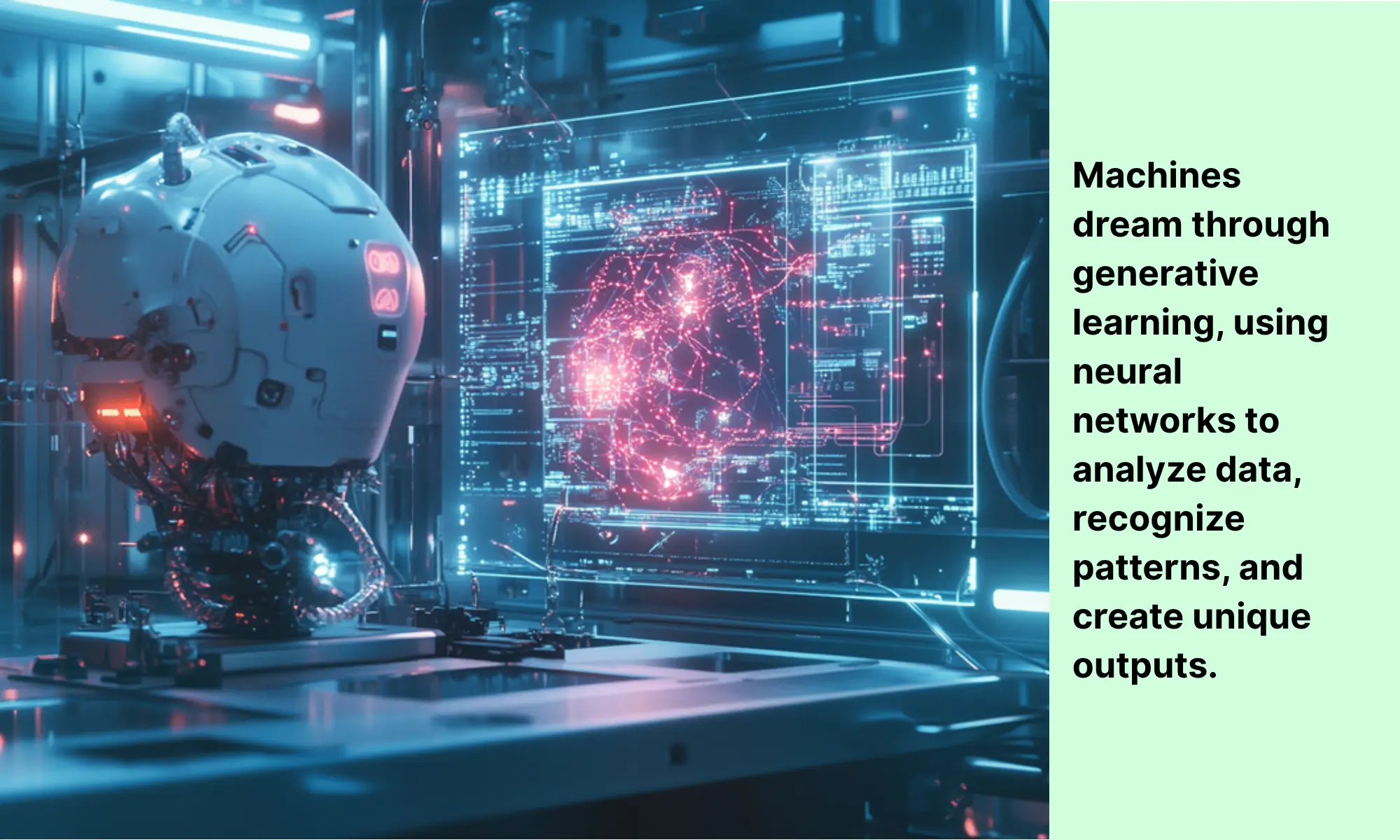



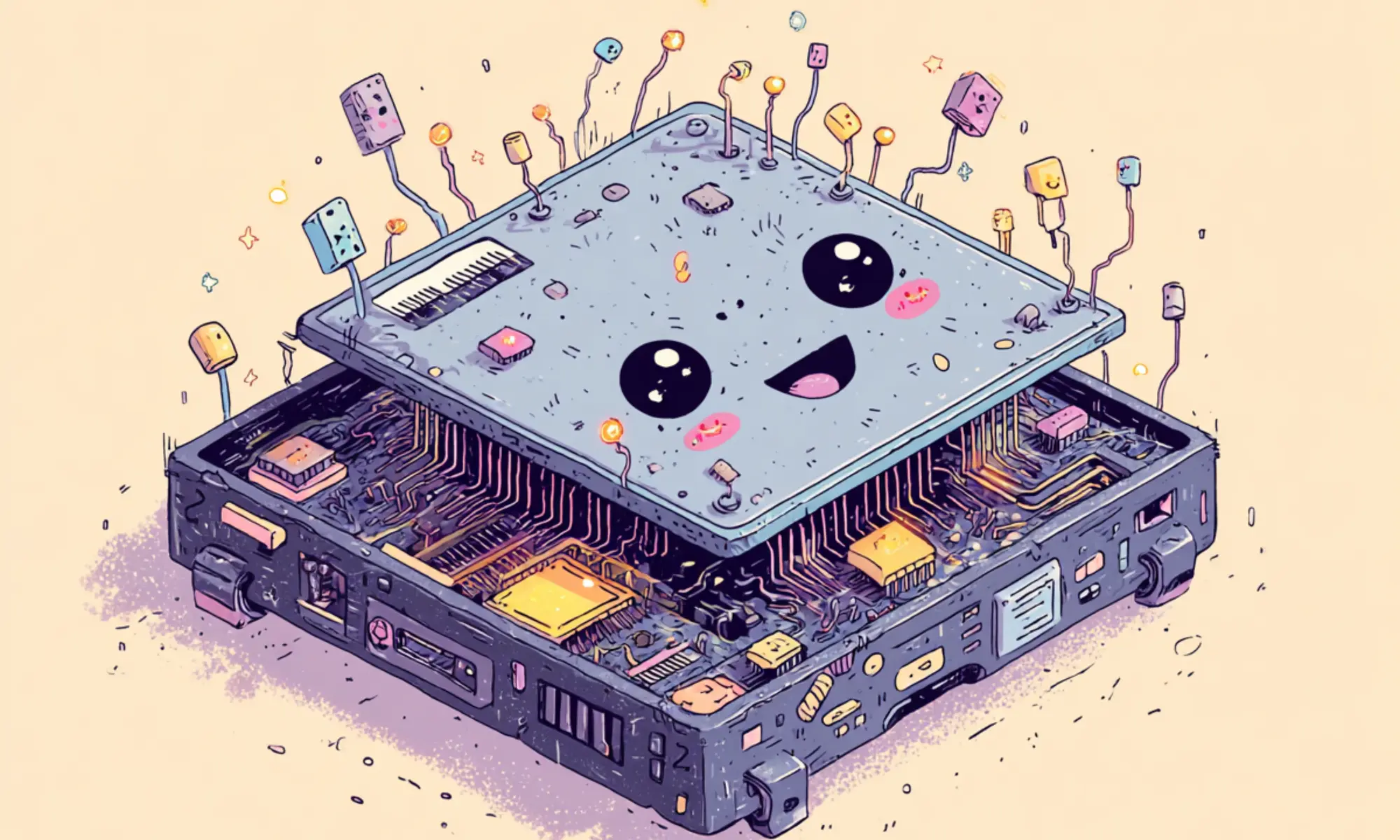
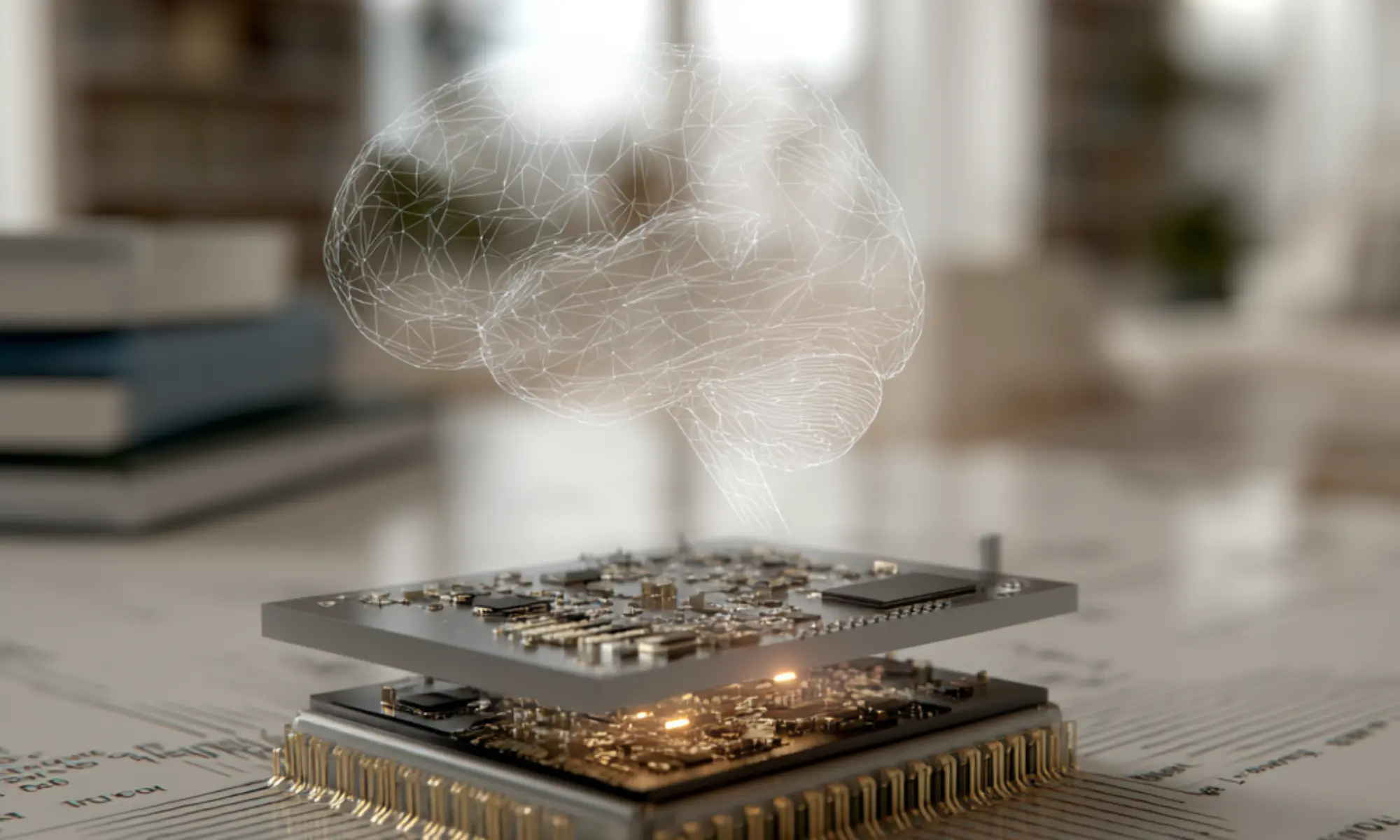
0 Comments